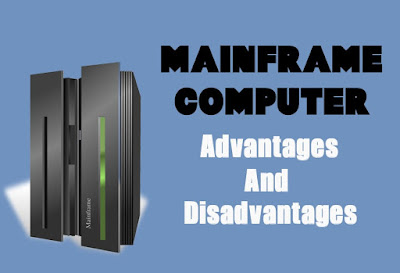What is Mainframe Computer ?
A Mainframe Computer is a system with huge performance that is composed of numerous processors. Its performance is higher comparatively than a regular computer but not more than a super computer.
Who uses Mainframe Computer ?
Usually mainframe computers are preferred by large corporations who needs powerful machines with high processing power. Other sectors such as banking and corporates too use mainframe computers for making a secured transaction. As per the requirements, there are different types of mainframe computers available. Each of them varies according to their own characteristics. Some of the examples for mainframe computers are UNIVAC, ENIAC, EDVAC and ASCC.
Even though mainframe computers typically assist in performing larger operations, they aren't flawless. Based on the type of environment they are used in and other factors, there are several advantages and disadvantages. These pros and cons can be used to determine if it is going to fulfill the user's needs.
In this article, you will get the information on 6 Advantages and Disadvantages of Mainframe Computer | Drawbacks & Benefits of Mainframe Computer. Through this post, you will know the pros and cons of using mainframe computers.
Let's get started,
Advantages of Mainframe Computer
1. Security
Since mainframe computers are made for corporations who need high secured transactions, these computers are designed making security as their primary goal. All the mainframe computers comes with top notch security that makes sure that the data is well protected. Especially, large scale organizations such as bank and insurance companies use mainframe computers to maintain their confidential information.
2. Reliability
Reliability is another feature of a mainframe computer. Most at times when the system undergoes failure, it will try to recover on its own. If it cannot, it will be notified to the administrator immediately. Then the administrator can take actions to replace the faulty hard drive.
3. Scalability
Mainframe computers are highly scalable both in terms of hardware and software. Due to this scalability, they can easily perform tasks with high complexity. For an example, more than one processor is connected in a mainframe computer which increases its overall processor speed.
4. Durability
Mainframe computers are mostly considered for their extreme durability. On average, these computers have a lifespan of over 10 years. Until that period, mainframe computers usually experience no problems. Once the average lifespan is reached, the users have the option of either replacing the machine or upgrading it.
5. Virtualization
For overcoming memory limitation problems, the mainframe computers use a process called Virtualization. In this process, the entire system is divided into segments that controls lots of virtual machines. From all these machines, the overall computing performance is increased.
6. Compatibility
Mainframe computers comes with their own operating system that supports wide range of hardware and software. Regardless of the ages, most of the software will be supported by the mainframe computer. Even if the system is upgraded, it can still manage to run old and outdated applications. And also, mainframe computers does not restrict the number of operating systems to be functioning as only one. Multiple operating systems can be made to run so that it could increase the overall system performance.
Disadvantages of Mainframe Computer
1. Installation
Installing a mainframe computer is difficult compared to a regular computer because of their hardware components. Unlike a regular PC, their hardware components are much larger in size. In addition to that, mainframe computers require a separate operating system which is different from that of a regular O/S. Unless this operating system is installed, the user cannot use this system.
2. Cost
Compared to a regular computer, the starting cost of a mainframe computer is significantly higher. The hardware and the software used in the mainframe computer makes it expensive. In fact a normal user will not be able to afford a mainframe system. Only big organizations prefer to mainframe computers due to their advanced features.
3. Physical Size
Apart from the cost, a mainframe computer typically takes more space too. This was the main problem during the invention of mainframe computers. On average, mainframe computers looked similar to that of a refrigerator. However, mainframe computers nowadays are much smaller in size when it is used to be earlier.
4. Maintenance
For the maintenance works of mainframe computers, it cannot be done by regular staffs. It requires handling of operations including debugging the system. Only staffs with high end skills will be able to manage the system.
5. Resource Requirement
A mainframe computer typically generally comes with some advanced features. Therefore, it requires more resources than a regular system. More resource consumption essentially means that it is going to increase the overall expenses involved in the system.
6. Environmental Restrictions
There is also environmental constraints on which the mainframe computers should be placed in. The temperature of the environment shouldn't be too hot. Otherwise, it could hang up the system quickly. For preventing this, there must be a dedicated cooling system used.










No comments:
Post a Comment